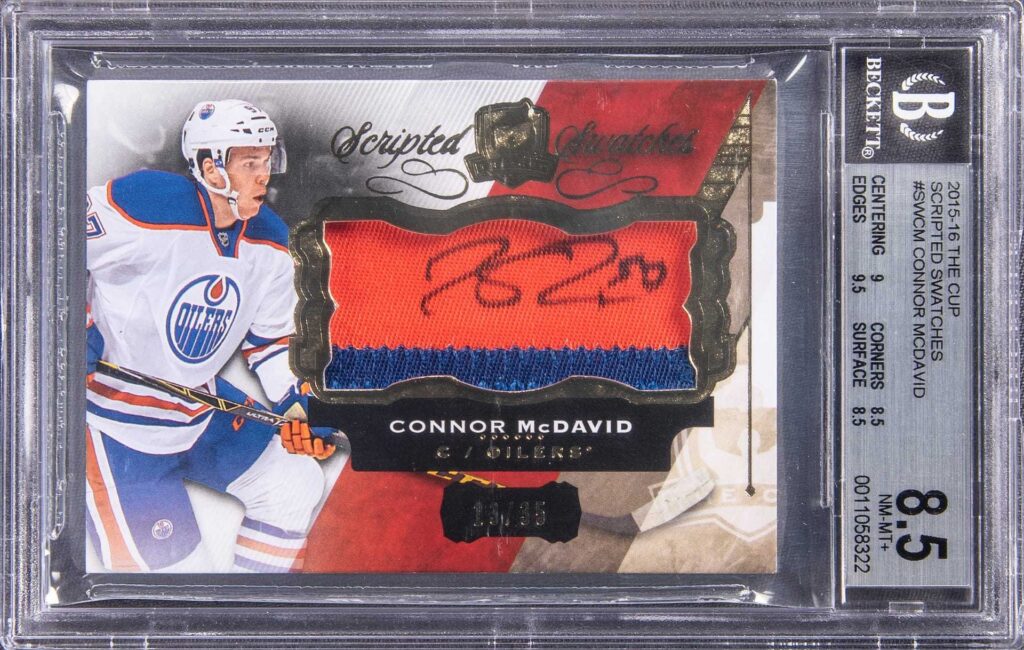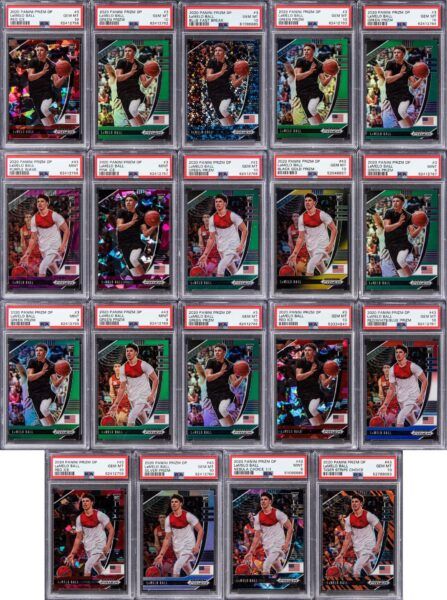#Sports #Card #Set #Collect #WorthPoint
One of the most common questions I get from new or would-be sports card collectors is which card set they should buy. It’s not a wrong question, nor an elementary one. And while some may feel sheepish asking it, it’s important to know what you’re getting into before you open your wallet.
In today’s market, there are usually a dozen or more sports card products released each year; therefore, studying and understanding what’s out there is crucial. You need to get a good read on what to expect in every box or pack and know which singles will have the most potential return on investment.
Let’s consider some of the elements for choosing a good sports card product to collect.
Basic Makeup of Sports Cards
The first step in understanding any sports card product is identifying its common elements. For more than twenty years, the content of most products has stayed the same, regardless of the sport. If it’s a product issued in packs, you’re going to get an assortment of the following:
Base cards: About 99 percent of all trading card sets are base cards. Generally, these cards are of veteran players and, at times, retired legends. Sometimes, short-printed cards—i.e., cards with a shorter production run—will be part of the base set.
Parallel cards: These cards often keep similar images or the general design of a base card but are unique in a minor way, such as having a colorful border, different texture, or reflective finish. Parallels are often numbered.
Rookie cards: The primary goal for most collectors is to obtain the first cards made of any player. As previously discussed, rookie cards must be numbered as part of the base set and cannot be an insert card.
Insert cards: Speaking of which, these cards are limited and are numbered differently than base cards. Increasingly, inserts are returning to focus for collectors, particularly as companies have refocused production on these cards. While some come in every pack, others fall along one per case of boxes. Either way, they are harder to come by and often have eye-catching designs or appealing themes.
Hit cards: Also known as chase cards, these rarer, higher-value cards often have special graphics or features, such as an autograph or embedded memorabilia (or “relics“), either game- or event-used. You might see printing (or press) plates or manufactured items like patches or medallions accompanying hit cards. Or, as has recently become more common, the card manufacturer may produce the hit card from a material other than standard cardstock, such as plexiglass or metal—these cards are referred to as “technology.” Cards can often combine elements; for example, a rare rookie card can also be a hit card.
Best for Your Buy
The best card sets will have an element of all these puzzle parts. Finding a set, regardless of the sport, that combines all these parts in one package is hard to find, and this is by design.
An increasing number of collectors like to put together rainbows of a particular player (all color and/or photo variations), and a good option for this task is a mid-range product. Prizm by Panini is the perfect example of a brand that does this very effectively, offering a broad spectrum of parallels across multiple sales channels (e.g., hobby, retail, and, at times, exclusive versions only available at the likes of Walmart). These products deliver a substantial number of samples in each box, allowing for acquisition through trade or relatively low prices (save for the rarest versions).
Other collectors will look for a product with a large selection of cards, known as its checklist. Often, these sets are the base brands (i.e., those named after the company itself), like Topps or Upper Deck, and have multiple series, giving collectors a long game quest to put the entire run together. These products are often buoyed by decades of tradition behind them, sometimes going as far back as the 1950s. They also provide relatively easy opportunities to get an entry-level rookie card of hot prospects.
In the mix are also mid-tier sets with a long-standing tradition in their collection. Stadium Club, SP Authentic, and Donruss Elite all have this lineage at a reasonable price, so collectors can break a box without taking out a mortgage. The secondary market is also decent for these.
One of the advantages of mid-tier products is that they tend to retain value, while their highest-dollar cards can be acquired with the right trade or finding the right purchase after some scouting online.
Then, there are the chase-laden premium, super-premium, and ultra-premium products. At a minimum, these tend to guarantee an autograph, a memorabilia card, or a combination thereof. These tend to price at or above one of the other product levels I mentioned earlier and draw the attention of card box breakers and high rollers looking at big-dollar rewards for their big-dollar risk.

So, Which Is the Best?
Across all of these formats come loyal collectors who swear that their favorite product is the best. It is exceedingly rare to find a collector who will open every product in a sport, let alone try to do a full year’s run of every card in a set.
It may sound like I’m trying to play a politically safe game in saying there is no right answer, but in all honesty, no single format wins out. Rather, it depends on where your passion lies. If you’re a big-dollar chaser and enjoy the proverbial game of roulette, then by all means, pick up Panini’s Immaculate or Topps’s Tier One. If you like to collect as a set hunter, Upper Deck’s O-Pee-Chee is the fit for you.
The bottom line with card collecting is that at the root of all types of hobbyists is enjoying the hobby. There’s no feeling like opening a pack or box of cards and discovering the treasures within.
Jon Waldman is a Winnipeg-based writer. He has written for Beckett, Go GTS, Canadian Sports Collector, and several other hobby outlets over his two decades in the hobby. His experience also includes two books on sports cards and memorabilia. Connect with Jon on Twitter at @jonwaldman.
WorthPoint—Discover. Value. Preserve.




